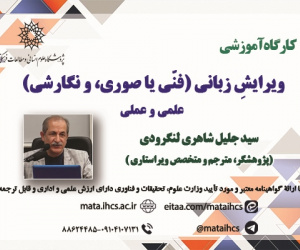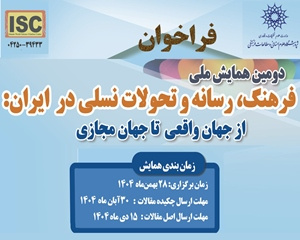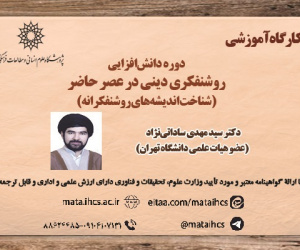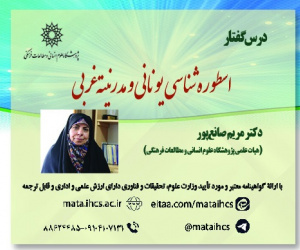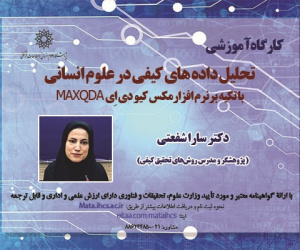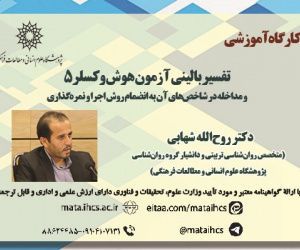مطالعه تطبیقی موجودات تخیلی در نقاشی های بناهای آیینی عصر قاجار با تمرکز بر چهار بنای کبودکلا، کبریاکلا، چمازکلا و شیاده در مازندران (بابل) و بناهای خداوردی، پیرتکیه، مفتاح و حاج قاسمی در گلستان (گرگان) (مقاله علمی وزارت علوم)
درجه علمی: نشریه علمی (وزارت علوم)
آرشیو
چکیده
نقاشی های موجود در بناهای آیینی که گونه ای از میراث بومی، فرهنگی و تاریخی در معماری منطقه مازندران و گلستان به شمار می آیند، در دوره قاجار تصویرگری شده اند. این نقاشی ها که از کیفیت بصری بالایی برخوردار نیستند، برخاسته از باورها و اندیشه های ناب هنرمندان و عامه مردم است که تأثیر آن را می توان بر فرهنگ و ادبیات مردمان این دیار نظاره گر بود. هدف از مقاله حاضر، مطالعه تطبیقی موجودات تخیلی در نقاشی های بناهای آیینی دوره قاجار در منطقه بابل (استان مازندران) و گرگان (استان گلستان) از حیث تنوع و خوانش فرم و محتوا است و این پرسش مطرح می گردد که موجودات تخیلی به کار رفته در نقاشی های بناهای آیینی عصرقاجار در مناطق نامبرده از حیث مضمون و ارزش های بصری، دارای چه ویژگی ها، شباهت ها و تفاوت هایی است؟ از این رو تعداد ده نمونه نقاشی از بناهای آیینی منطقه بابل و هفت نمونه نقاشی از منطقه گرگان انتخاب و مبنای تحلیل قرار گرفته است. روش تحقیق توصیفی- تحلیلی است و گردآوری اطلاعات به روش کتابخانه ای و میدانی است. نتایج تحقیق بیانگر آن است که نقوش تخیلی در بناهای آیینی دو منطقه مذکور، به دلیل مجاورت دو استان و تأثیر آنها بر یکدیگر از حیث روابط فرهنگی، در کاربرد کیفیت های بصری مانند بهره گیری از خطوط منحنی در فرم، ترکیب بندی های ساده، کاربرد فضاسازی اسرارآمیز به سبب خالی بودن پس زمینه در اکثر نقوش و ترسیم آنها به صورت دوبعدی و فاقد حجم بودنشان، با هم اشتراکاتی دارند، ولی در سقانفارهای بابل، نقوش تخیلی، نمایانگر ذوق و ذهنیت خلاقانه هنرمند می باشند که با قلم روان و طراحی آزادانه خطوط، نقوشی ساده و غیرحرفه ای ترسیم کرده است. از طرفی در منطقه گرگان این نقوش، با نگاهی واقع گرایانه تر ترسیم شده اند و توجه به تناسبات، به جنبه عینی تر بودن نقوش کمک زیادی کرده است.A Comparative Study of Imaginary Creatures in the Paintings of Qajar Era Ritual Buildings, Focusing on the Four Buildings of Kabudkola, Kebriakola, Chamazkola and Shiadeh in Mazandaran (Babol) and the Buildings of Khodavardi, Pir Tekyeh, Meftah and Haj Ghasemi in Golestan (Gorgan)
The paintings in religious buildings, which are a type of native, cultural and historical heritage in the architecture of Mazandaran and Golestan regions, were painted in the Qajar period. These paintings, which do not have a high visual quality, originate from the pure beliefs and thoughts of artists and common people, whose impact can be seen on the culture and literature of the people of this country. The purpose of this article is to conduct a comparative study of imaginary creatures in the paintings of Qajar period ritual buildings in Babol (Mazandaran province) and Gorgan (Golestan province) in terms of diversity and reading of form and content. Thus, this question is raised: what are the characteristics, similarities and differences of the imaginary creatures used in the paintings of the Qajar era religious buildings in the mentioned regions in terms of theme and visual values? Therefore, the number of ten samples of paintings from the religious monuments of Babol region and seven samples of paintings from Gorgan region have been selected and used as the basis of analysis. The research method is descriptive-analytical, and information is collected by using library and field methods. The results of the research indicate that the imaginative motifs in the religious buildings of the two mentioned regions, due to the proximity of the two provinces and their influence on each other in terms of cultural relations, in the use of visual qualities such as the use of curved forms and lines, simple compositions, the use of mysterious space creation and drawing them in a two-dimensional way without volume and simple and popular imagery, have commonalities. However, in Babol's Saqanfars, imaginative motifs represent the taste and creative mentality of the artist, who has drawn simple and unprofessional motifs with a fluent pen and free line design. On the other hand, in the Gorgan region, these motifs are drawn with a more realistic look, and paying attention to proportions has greatly contributed to the more objective aspect of the motifs.It is also noteworthy to mention that most of the motifs represent the frontal view which has further helped in achieving a better understanding and analyses of the paintings. But, the significant aspect which seems to require further studies after much thought on the imaginary motifs of the Babol and Gorgan regions, apart from the fact that the majority of these works of art have been created by self-taught artists and artisans and have been designed and colored in a folkloric manner far from the knowledge of academic rules and principles, is the variety in the local artists’ approach in each region in terms of creation of motifs and their nature. In other words, in Babol region, a simple expression of the image and creative use of folkloric drawing as well as individual and mental taste of the artist have led to the creation of motifs with simple and fluid lines and a mixture of mental and realistic view by the artist (which can be observed in examples such as the motifs of dragon, Div (demon), and lion and sun). On the other hand, in Gorgan region, motifs represent a more objective and material aspect and a strong and rigid drawing in comparison to the motifs of Babol region. It may further be added that due to the primitive and unsophisticated drawing of a type of images in Babol region, Images based on a different language have come to view. On the whole, as evident in the motif of the lion and sun in both regions, in the Babol region, the partial depiction of the painting has enhanced the sense and impression of its imaginary nature and shows that the local artist has not tried to depict the reality and essential and inherent nature of lion, while in Gorgan region, the above-mentioned motif, represents an attention to the proportions of lion’s body and depiction of the animal’s muscular legs, which leads to creation of a more material and realistic image.

